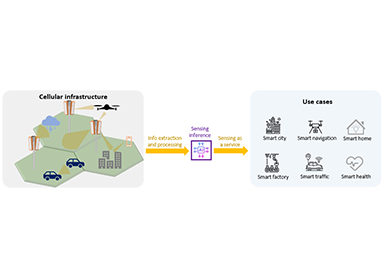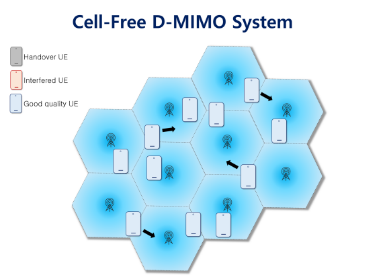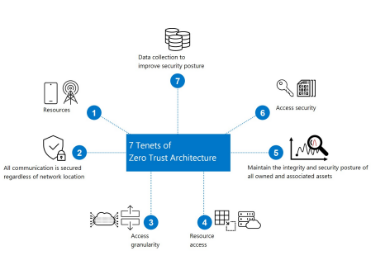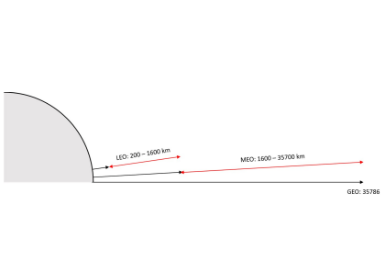Communications
6G MIMO: Toward Intelligent and Energy-Efficient Radio
Introduction
Massive MIMO, as shown in Figure 1, has been a core enabler of 5G, providing dramatic gains in capacity and coverage through spatial multiplexing and beamforming [1] over the legacy antenna. However, as 5G commercial deployment becomes more widespread, its limitations also became apparent. The most prominent issue was energy consumption. Operating large-scale antenna arrays around the clock requires constant activation of multiple RF chains, leading to high energy consumption and thermal load. This is particularly problematic in dense urban deployments or edge nodes with limited energy budgets.

Figure 1. Comparison between legacy antenna and Massive MIMO
In addition, while 5G Massive MIMO has provided significantly improved spectral efficiency compared to the previous generations, the following pain points have been identified related to its implementation and radio unit design:
In light of the above issues, 6G MIMO must be envisioned based on the two complementary axes: “Energy-efficient operation” at the physical layer, and “AI-assisted, multi-faceted optimization involving feedback, beam management, and scheduling” as shown in Figure 2 [2].

Figure 2. 6G MIMO Vision
Key Drivers in 6G MIMO
Axis 1: Smarter, Energy-Aware Transceiver Operation
In 6G MIMO, energy efficiency must be a core design principle rather than a secondary consideration. As the number of antennas is increased, the number of power amplifiers increases proportionally, thereby increasing energy consumption for both network and user. While larger antenna arrays enhance spectral efficiency and capacity, leaving all antennas always on—regardless of traffic demand—leads to inefficient energy utilization.
To address this, adaptive RF chain activation based on real-time traffic and channel conditions should be introduced. For instance, all the RF chains are utilized in high traffic scenarios, while a smaller subset of RF chains are activated when the traffic is low. This adaptability becomes critical in upper-mid band frequencies (>6 GHz) with even larger antenna arrays for mitigating more severe path loss.
Key Technical Focus:
By prioritizing energy-aware protocols, 6G MIMO can balance spectral efficiency gains with sustainable operational efficiency.
Furthermore, radio unit (i.e., TRP, transmission and reception point) can also be selected adaptively for the same motivation. Multi-TRP CJT (coherent joint transmission) can expand dimension of arrays which multiple arrays can transmit signals coherently. It can provide more spectral efficiency based on diversity and beamforming gain. To maximize benefit from CJT, some radio units are turned on and remaining could be turned off to increase energy-efficiency. An algorithm for selecting the radio units dynamically is required and UE-aided calibration for the selected radio units can help to implement energy-efficient joint transmission.
To further reduce unnecessary energy consumption, reference signal transmission (CSI-RS, DMRS) can be event-triggered or have a longer periodicity. If spatial channels are stable or user mobility is low, the system can omit certain measurements. This leads to saving not only in energy but also in air-interface resources.
These mechanisms—dynamic RF control, Multi-TRP adaptation, and reference signal reduction—are designed to work without the artificial intelligent (AI) technology. They form the baseline efficiency mode that ensures that all devices, including low-end or legacy UEs, can benefit from improved energy efficiency. Further improved efficiency can of course be attained with AI.
Axis 2: AI-assisted MIMO Intelligence
Energy efficiency is essential for sustainable operation; however AI primarily targets enhanced performance and scalability in 6G systems [1]. Our envisioned 6G architecture integrates AI extensively across all massive MIMO components.
A key application is AI-assisted CSI feedback. Traditional codebook-based feedback mechanisms become increasingly burdensome with increased antenna counts, resulting in prohibitive overhead while simultaneously limiting achievable performance. Consequently, a novel CSI framework leverages machine learning models—specifically neural networks—deployed both at the network infrastructure and within UE. These models compress high-dimensional channel information significantly more efficiently than current 5G eType II codebooks, thereby reducing uplink feedback overhead by a substantial margin.
Beyond CSI compression, AI offers potential improvements in beam prediction accuracy, user scheduling algorithms, interference mitigation techniques, antenna subset selection processes, and the development of flexible bases for adaptive channel representations. While acknowledging that AI is not a panacea, its strategic implementation provides enhanced adaptation capabilities, improved spectrum utilization, and scalable performance commensurate with increasing network complexity; these benefits are contingent upon a robust physical layer design incorporating energy-aware principles.
To ensure operational resilience, 6G must support both AI-native functionality and non-AI fallback pathways. In addition, deploying ML models on UEs presents challenges such as constrained computational resources, limited memory capacity, and strict power consumption budgets. These can severely restrict model size and complexity. Therefore, AI serves as a complementary technology to well-engineered MIMO components, enabling a more favorable cost-performance trade-off and facilitating a future-proof evolutionary path for 6G massive MIMO.
Research Areas for 6G MIMO
Scalable Codebook for CSI Framework: In New Radio (NR), Channel State Information (CSI) codebooks were optimized to minimize signaling overhead and accommodate diverse deployment scenarios. However, the proliferation of distinct codebook types arose due to inherent scalability constraints in their design. For 6G, a scalable and future-proof CSI codebook framework emerges as a compelling solution, characterized by two fundamental operational modes (Figure 3).
By integrating these two modes, the proposed framework ensures unprecedented adaptability and scalability across a wide range of antenna architectures. It effectively balances the trade-off between system performance and signaling overhead, paving the way for robust and efficient 6G wireless communication systems.
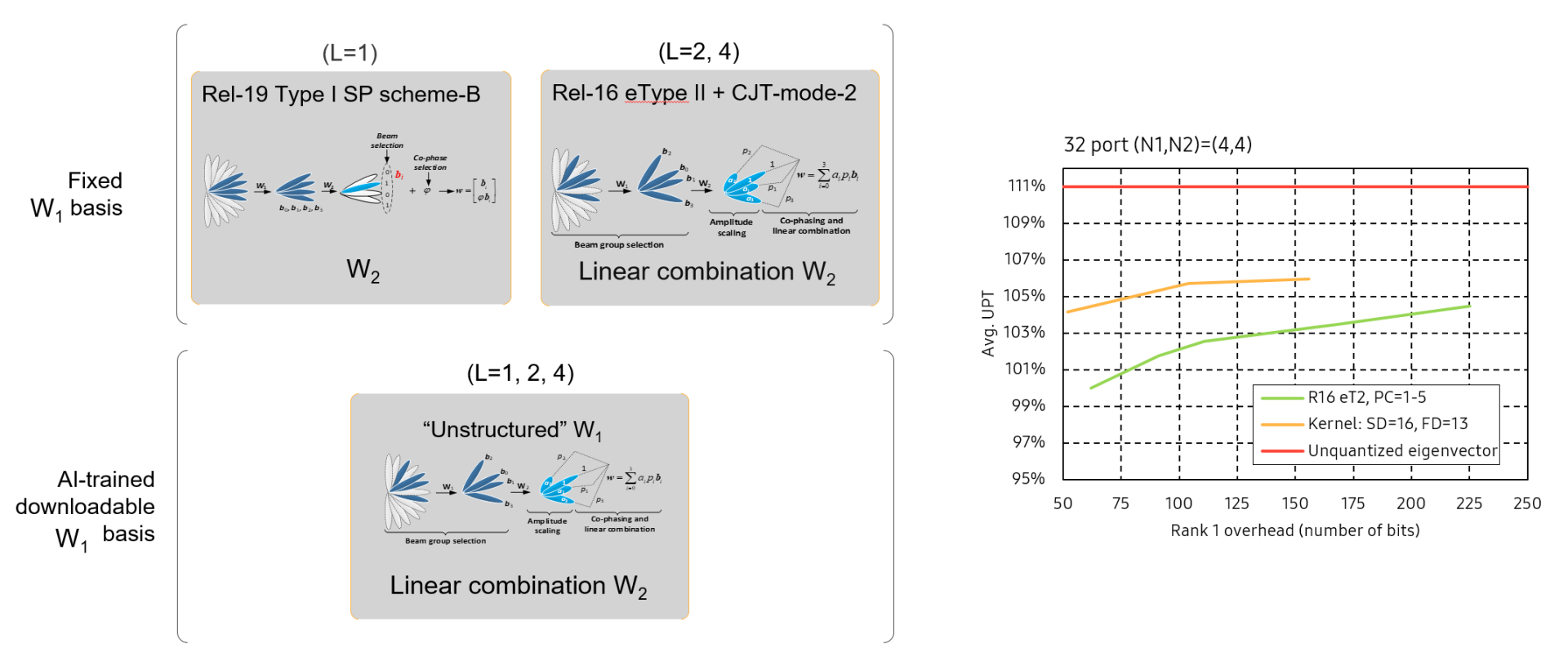
Figure 3. Scalable codebook and preliminary evaluation results
SRS-less channel reciprocity for DL and UL: Recent advancements in UE implementation have heightened expectations for downlink-uplink channel reciprocity in TDD systems. However, uplink RS face significant coverage constraints due to the inherently limited transmit power of UEs. To mitigate this issue, uplink channels can be estimated using downlink RS-reported CSI, thereby conserving UE power and reserving uplink resources for other critical functionalities. For downlink CSI acquisition, Sounding Reference Signals (SRS) traditionally rely on reciprocity principles. However, they are susceptible to power imbalances across UE antennas, a phenomenon often caused by hardware imperfections, which leads to distorted channel estimates and subsequently degrades system throughput (Figure 4).
This innovative methodology represents a significant step forward in optimizing channel estimation processes for next-generation wireless communication systems.

Figure 4. Reciprocity based DL CSI acquisition and UL transmission
Reference signal reduction: To support upper mid-band frequencies in 6G, the deployment of up to 256 antenna ports is anticipated to significantly enhance Multiple Input Multiple Output (MIMO) beamforming gains and effectively mitigate path loss challenges associated with higher frequency bands. However, the substantial increase in the number of antenna ports introduces a corresponding rise in CSI-RS overhead, which poses a risk to spectral efficiency.
AI-driven and non-AI-based CSI-RS reduction techniques are essential to maintain robust channel estimation performance while minimizing unnecessary signaling overhead. Furthermore, the scalability of spatial multiplexing demands Demodulation Reference Signal (DMRS) enhancements, particularly for orthogonal port allocation in Multi-User MIMO (MU-MIMO) scenarios.
These enhancements aim to optimize resource utilization and improve demodulation performance, all while keeping overhead to a minimum. Collectively, these advancements represent a strategic balance between antenna scalability and spectral efficiency, ensuring that 6G systems can deliver high-performance wireless communication without compromising on resource efficiency or network capacity.
UL MIMO Enhancement for FWA/CPE: Legacy TDD systems were designed to support asymmetric DL and UL throughput, primarily due to disparities in resource allocation and power distribution favoring the downlink. This asymmetry has driven the development of UL MIMO enhancements to improve spectral efficiency and address the growing demand for balanced bidirectional communication.
With the recent commercialization of UEs equipped with multiple UL transmit antennas and the expanding markets for Customer Premises Equipment (CPE) and Fixed Wireless Access (FWA)—which often feature specialized hardware—there is an increasing need for advanced UL MIMO schemes to fully exploit the potential of multi-antenna technologies. To maximize precoding gains within limited resource blocks, particularly under conditions of high channel frequency selectivity, the deployment of subband-specific precoders has become critical. Looking ahead to 6G, the development of device-specific UL codebooks tailored to varying form factors (e.g., handheld devices versus CPE/FWA units) and diverse antenna structures warrants further investigation. Additionally, the standardization of precoder signaling mechanisms is essential to streamline deployment and enhance UL efficiency across heterogeneous device ecosystems.
These advancements collectively aim to unlock the full potential of UL MIMO, ensuring that 6G systems can deliver superior performance, flexibility, and resource utilization in increasingly complex and dynamic wireless environments.
Multi-variate TCI state for flexible beam management: In 5G, the process of spatial beam indication encountered inefficiencies stemming from misalignment between antenna port definitions and Transmission Configuration Indication (TCI)-based beam signaling. While antenna ports are designed to facilitate consistent channel inference across multiple symbols, TCI states serve to specify RS and quasi-co-location (QCL) parameters for effective beam management.
To resolve this disconnect, a novel concept of a spatial resource unit—modeled as a single logical port—has been proposed. This unified unit encapsulates both the conveyance of channel information and the associated beam-related parameters, such as downlink reception and uplink transmission filters. By consolidating these functionalities, this approach simplifies beam indication procedures and reinforces port-channel consistency, thereby enhancing system efficiency and reliability.
For scenarios involving multi-beam operations—such as those encountered in CSI-RS beam management—a multi-variate TCI state (mv-TCI) mechanism has been introduced. This innovation enables the signaling of N (>1) TCI states within a single indication instance, offering greater flexibility in handling complex multi-path environments and multi-Transmission Reception Point (mTRP) operations. In such scenarios, UEs may dynamically connect to multiple TRPs, necessitating more sophisticated resource allocation and beam coordination strategies. The mv-TCI approach addresses these challenges by streamlining signaling processes and optimizing multi-beam coordination, ultimately paving the way for more robust and adaptive beam management in advanced 6G networks.
Conclusion
The evolution from 5G to 6G MIMO necessitates a paradigm shift to address critical limitations in energy efficiency, hardware complexity, and signaling overhead. By integrating energy-aware operations—such as dynamic RF control and Multi-TRP adaptation—with AI-driven optimization across beam management and CSI frameworks, 6G aims to harmonize spectral efficiency with sustainability. Key innovations like scalable codebooks (AI/ML-enhanced and fixed bases), hybrid SRS/CSI-RS channel acquisition, and device-specific UL MIMO enhancements for FWA/CPE will enable adaptable, high-efficiency networks. Further advancements in multi-variate TCI states and reference signal overhead minimization will ensure scalable, interference-resilient systems. Collectively, these strategies forge a path toward intelligent, sustainable, and future-proof wireless connectivity for diverse 6G deployment scenarios.
References
[1] Recommendation ITU-R M.2160-0, Framework and overall objectives of the future development of IMT for 2030 and beyond, Nov 2023
[2] 6GWS-250036, Vision and Technologies for 6G Radio, Samsung

